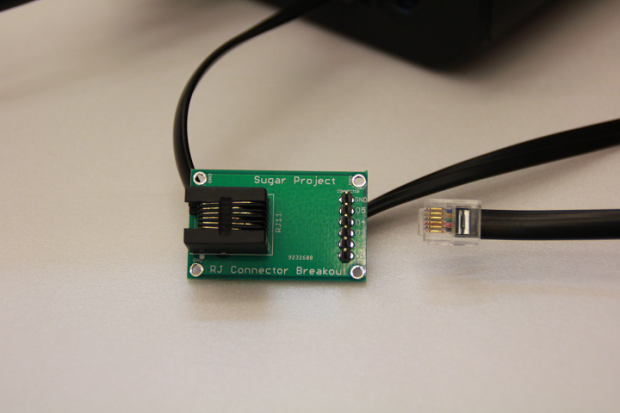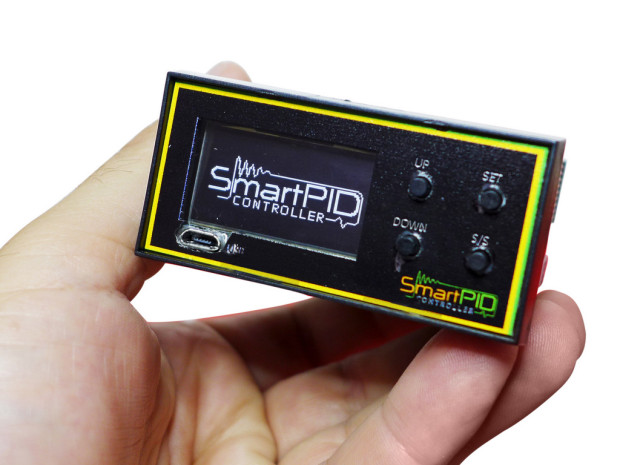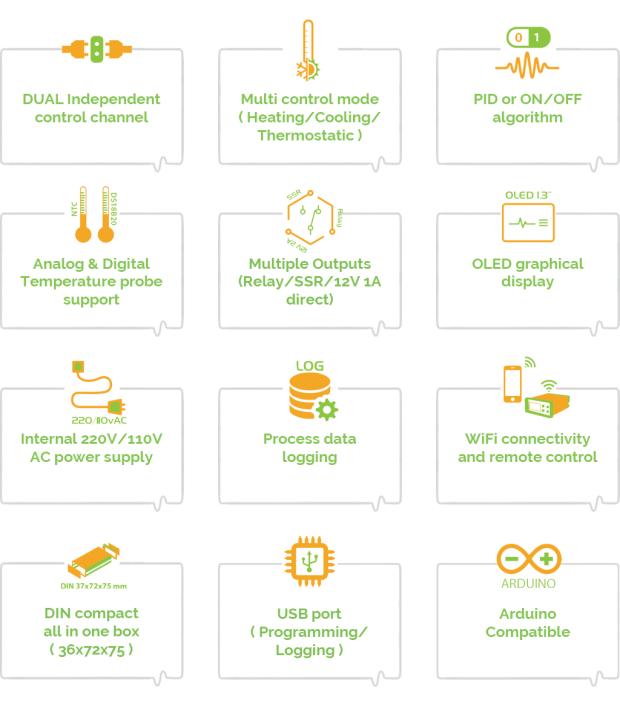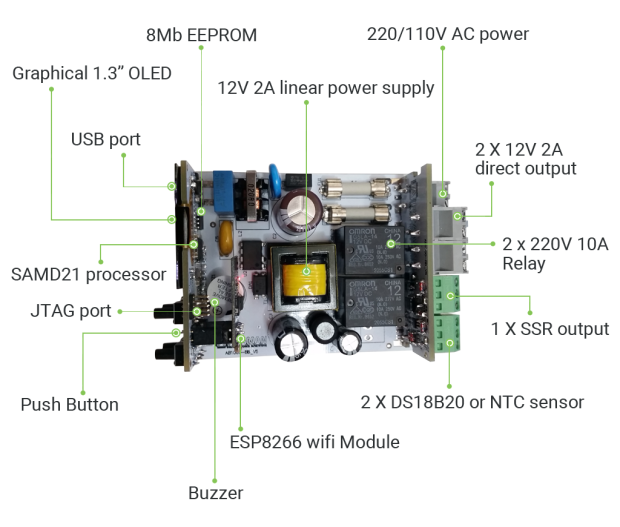educ8s.tv show us their Top 5 Arduino Displays.
Top 5 Arduino Displays – [Link]
12V To 24V Booster is based on LM2588 IC from Texas Instruments. The LM2588 regulator integrated circuit specifically designed for fly-back, step-up (Boost) , and forward converter. The board provides 24V DC 1A DC output, Input 8V to 16V DC. Board has minimum components, screw terminal provided for input & outputs.
Features
12V to 24V 1A DC-DC Boost Converter using LM2588 – [Link]
12V To 24V Booster is based on LM2588 IC from Texas Instruments. The LM2588 regulator integrated circuit specifically designed for fly-back, step-up (Boost) , and forward converter. The board provides 24V DC 1A DC output, Input 8V to 16V DC. Board has minimum components, screw terminal provided for input & outputs.
pickandplace.wordpress.com writes:
I started with making the TMP102 temperature sensor work. Nothing to say in particular, it’s just an other I2C-small-package-sensor. Or rather SMBus, but apart from the minimum speed clock requirements on the SMBus, the two protocols are alike.
Designing a simple and cheap temperature logger – [Link]
Conductivity is the ability of a material to transfer electrons. It is the opposite of the concept of resistivity which is well known to electricians. However, while we are used to address the topic of conductivity in the field of electronics, things get a little bit more complicated when we try to apply the concepts to chemical solutions such as salty water.
Conductivity Shield for Arduino Uno – [Link]
Sugar Device is a tool designed to control AC Voltage and it promises to change the way you control AC applications forever.
Sugar team is targeting hobbyists, students, teachers and engineers to push their application to the next level, since it makes AC control easy, safe and compatible with a lot of development platforms. The mechanical case that comes with Sugar is offering protection to users while using AC voltages and preventing any electrical shock resulted by misuse.

You can control AC voltage using Sugar with two different ways: ON-OFF switch, and AC output voltage control. You can power Sugar using the AC C14 cable. This voltage provided is used to power the load connected and the internal circuits. The fuse holder is accessible, you can replace it easily whenever you need.

For the output, Sugar is providing a universal output socket to connect your load, and it is compatible with all AC power cable types. Sugar can work with 110V/220V and with 50Hz/60Hz. You can switch between the two options using a switch provided with two indicator LEDs.
Sugar Device also can be connected with 3.3V and 5V development boards like Arduino, Raspberry Pi, and Beaglebone using the RJ12 cable. Sugar had designed a RJ Connector breakout to make it possible to connect your board and it will be available in all kits. Controlling the AC loads using your PWM pins and Sugar will be so simple.
This 150x120x47 mm size device supports WiFi and Bluetooth and is IoT ready. For example, ESP8266 can directly control Sugar Device since it has PWM output with Frequency of 1KHz.
Sugar Device comes in two editions: Sugar 300, a white device that control up to 300W, and Sugar 1000, a black one that can control up to 1000W. The second one is offered for hackers and professionals where the first is for newbies.
Sugar Device is now live on a crowdfunding campaign on Indiegogo and still has a month to go. You can pre-order your Sugar 300 with a Power cord C14, RJ12 Cable, Sugar RJ Breakout and two AC fuse for only $49! Check the campaign video for more information.
In this video you can watch Sugar Device in Action, check it out!
Sugar device is the tool you need to expand the scope of your projects and control AC loads safely. Your dream of making your home smart can come true now with the use of this device. This device had came to life due to a cooperation with Fablab dynamic in Taipei, Taiwan. Such a cooperation will make it uncomplicated for makers to produce their own devices. Mohannad Rawashdeh and his team had tested many applications and used different platforms to ensure that Sugar is safe, practical and easy for everyone to use.
“When I was looking for FabLab in Taiwan, I found FabLab Dynamic. They offered me a free space inside the lab to work and offered me all help I need to find component resources, using machines and instruments and contact with designers I need for my project” – Mohannad Rawashdeh, founder of Sugar Device and an electronics engineer.
You can check the campaign page to know the offers and full specifications. More information are provided on Sugar Device website. Many tutorials are added to this page and source files will be added soon on Github.
Sarunas built this device to replace a bunch of different remote controls with a smart phone.
Controlling TV, HiFi, DLP and similar IR controllable stuff is easy and fun from a smart phone using previously built smart remote, until it runs out of battery. Despite that Bluetooth Low Energy device (smart remote is built on it) uses so little of it, the battery will eventually run out.
Blue IR: Build your own universal remote – [Link]
Sjaak shared a tip for panelizing PCB boards in Eagle:
Panelizing is done by machining a slot between two or more boards, but keep them attached by a small amount of PCB material (mousebites). I used to do it by hand: generated all the schematics into multiple sheets and then route the board and finally add the slots with mousebites in the PCB editor. I generally use slotwidth of 50 mil and the smallest drill possible (12 mil) 12.5 mil apart as breakingline. I tend to place the mousebites about 2cm from each other to maintain PCB strength.
Panelizing made easy in Eagle – [Link]
@ blog.squix.org has published his latest project.
After many hours of work I’m very happy to finally publish all the sources for the ESP8266 PlaneSpotter project. It is not yet really in a V1.0.0 state but I’m sure with the help of the community it will quickly get better. While this post is more a “making-of” you can find build instructions on Github: https://github.com/squix78/esp8266-plane-spotter-color
ESP8266 PlaneSpotter – [Link]
ARZAMAN Smart Engineering is a small innovative Italian startup company that develops smart hi-tech solutions, by working on specific ideas for a specific hobbyist market. ARZMAN has just launched a new product: SmartPID!
SmartPID Controller is a hi-tech product that facilitates temperature and process control. It has the ability to control any thermos-regulated process, heating or cooling, and also it can control any application in your home. In addition, it is compatible with Arduino, so you have the chance now to move your applications to the next step!

It is provided with two apps: smart thermostat app and the smart brewing app. The smart thermostat app can be used for any thermal regulated process, while the brewing app is is a vertical application that is dedicated to brewing process automation from mashing to boiling.
SmartPID is IoT-ready,cloud-connected, and runs PID algorithm. In addition, it has the following features:


SmartPID is powered by SAMD21 32-bit ARM® Cortex®-M0+ by Atmel and it has 8 Mb EEPROM and ESP8266 WiFi module with many other specifications and advantages as shown in the picture.
It is totally compatible with Arduino since it
has SAMD21 processor, a dedicated USB bootloader and board definition, can be programmed with Arduino IDE and can use the libraries available.
SmartPID comes with a mobile app to control and monitor the project installed. Check this video to see the app in action.
“SmartPID is not a simple controller or thermostat, is more an “open platform” powerful and flexible where the resources and I/O can be used for different applications, different environments and integration. My idea is to develop an ecosystem of “vertical” applications on top of a common set of features” -Davide Arzarello, founder of ARZAMAN Smart Engineering.
SmartPID is now live in a crowdfunding campaign on Indiegogo and it has only one week to go. You can pre-order it now preloaded with the thermostat app for around €89. Check SmartPID website and the campaign page to know more details and specifications. You can see SmartPID in action in this promo video: